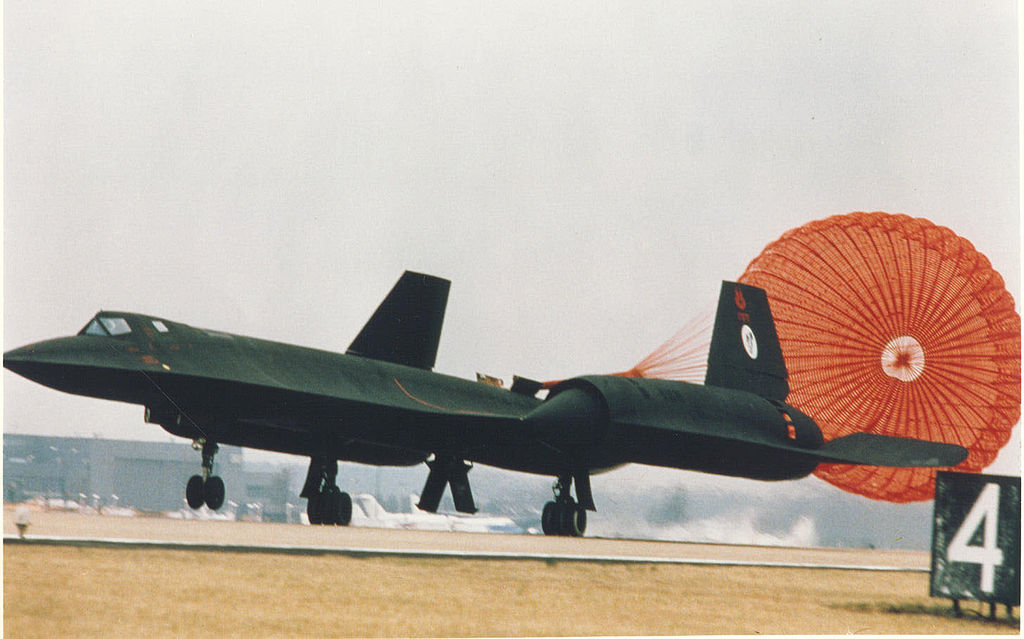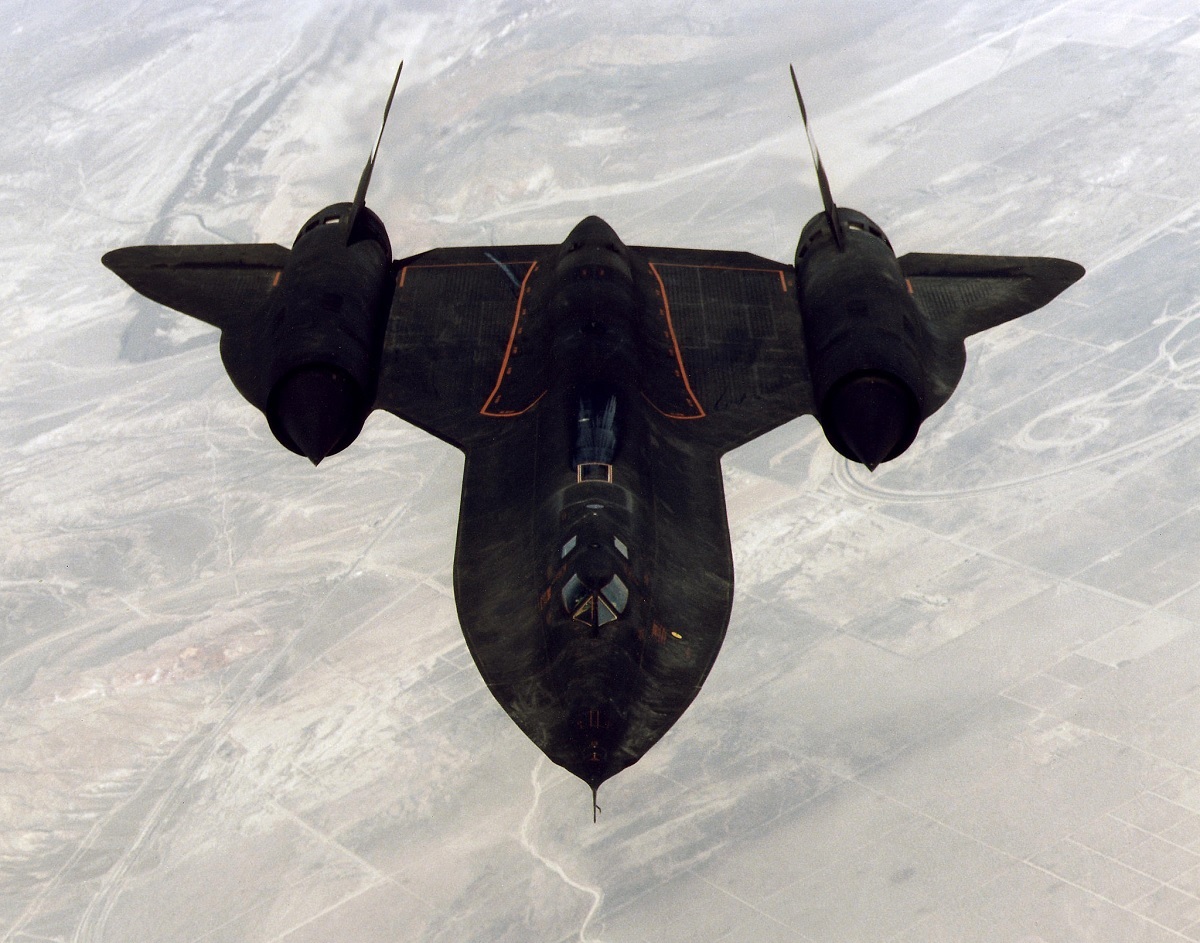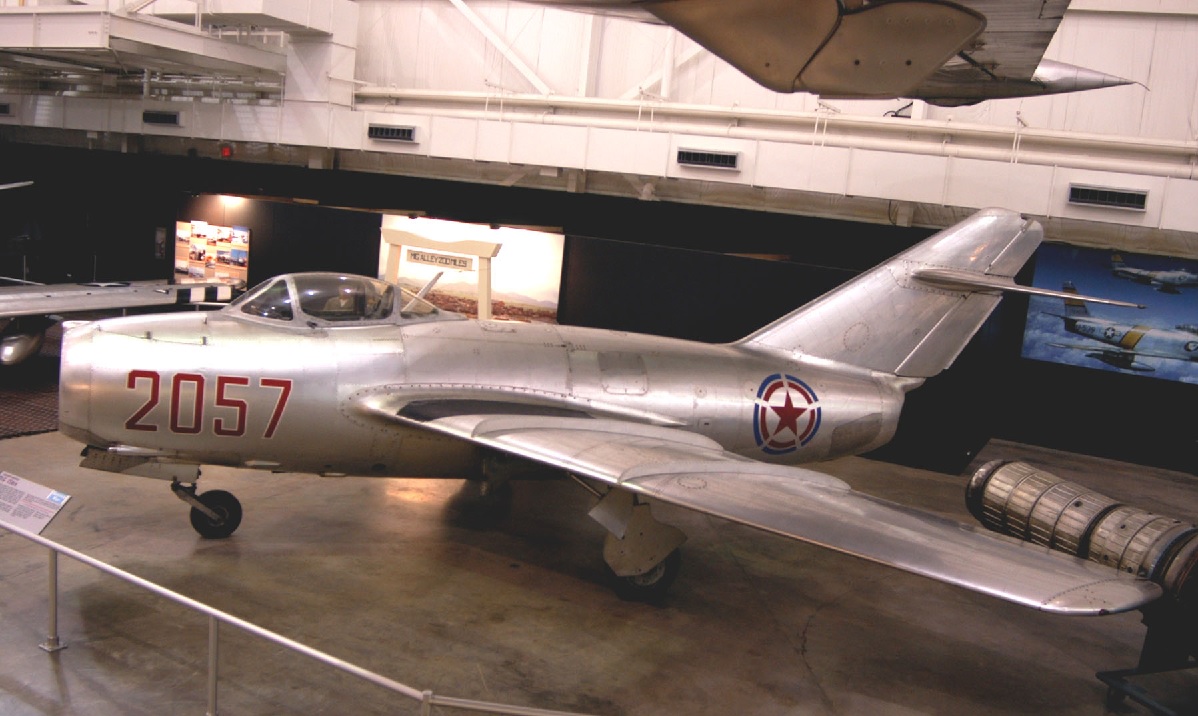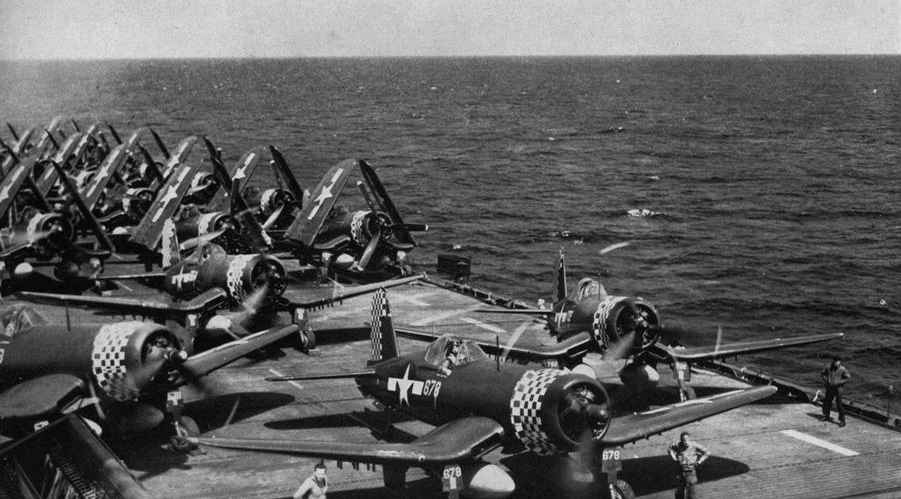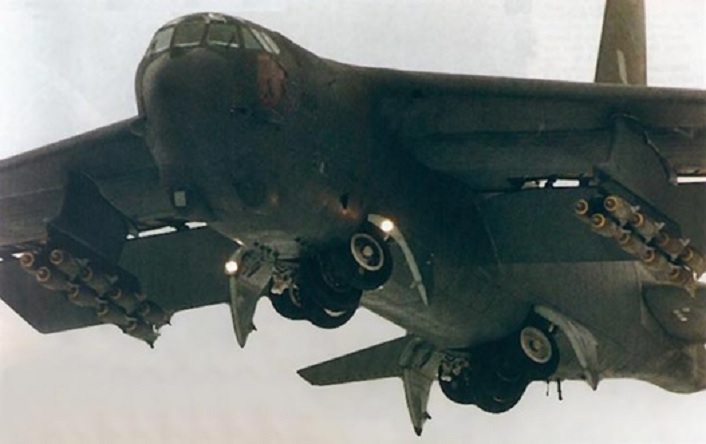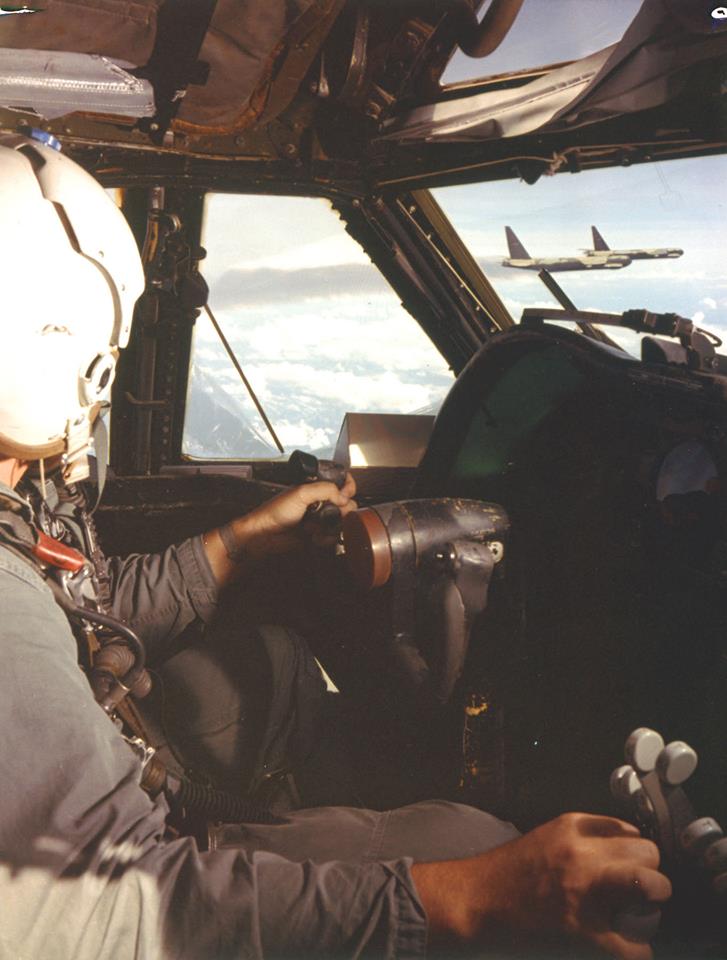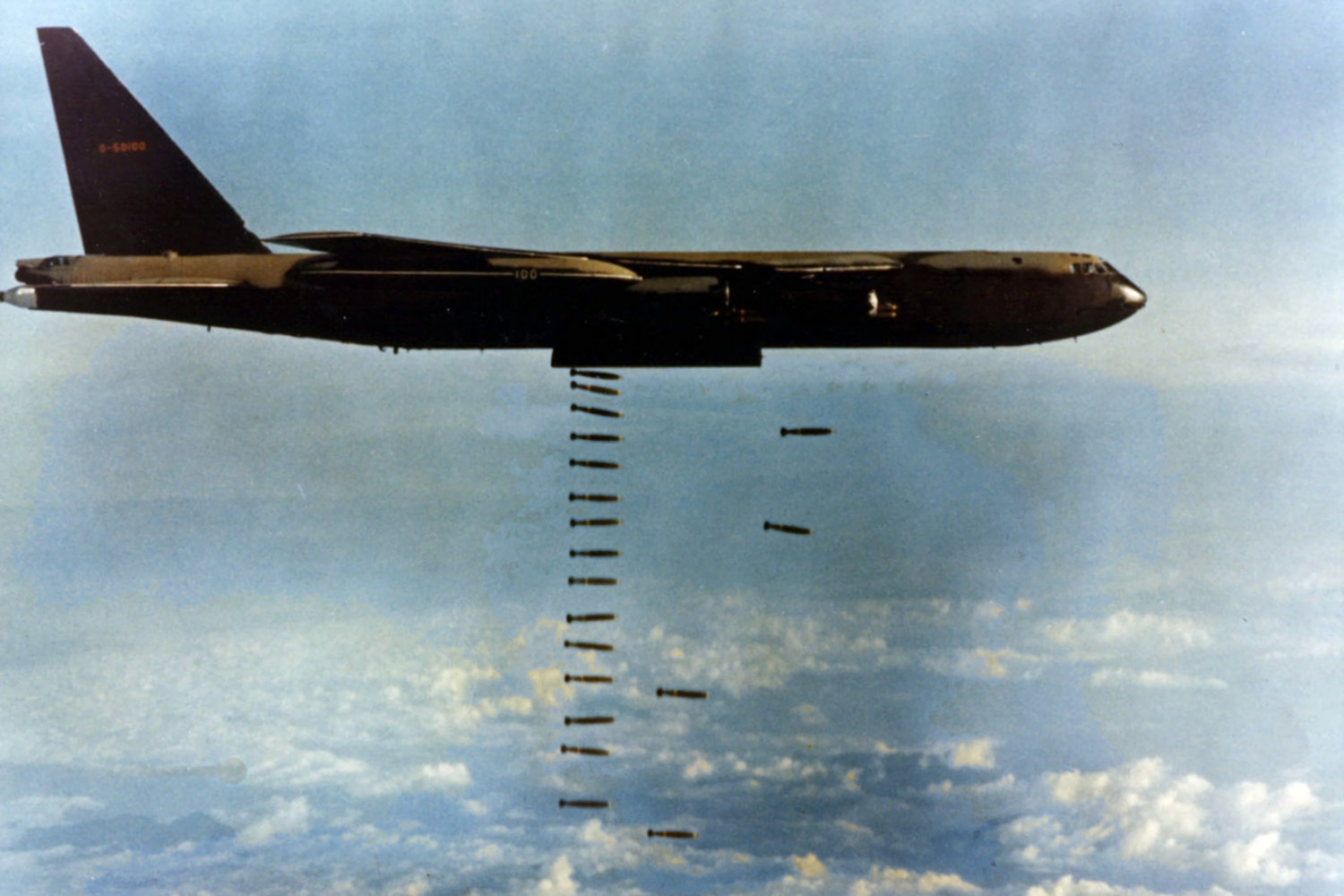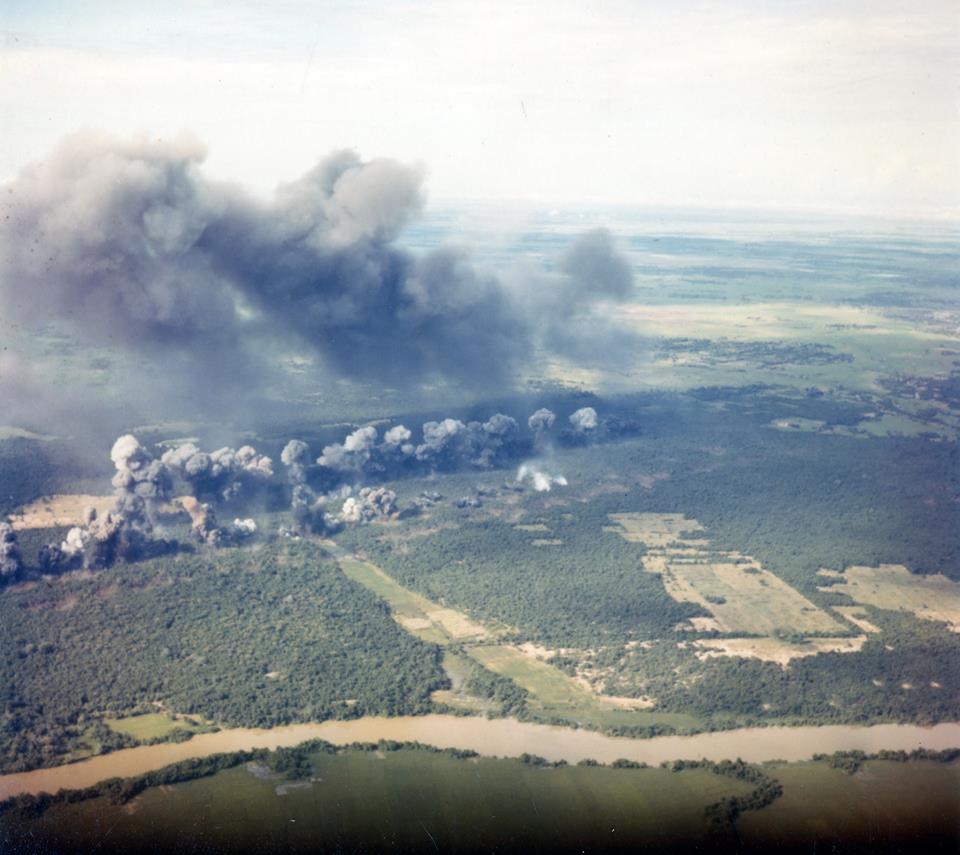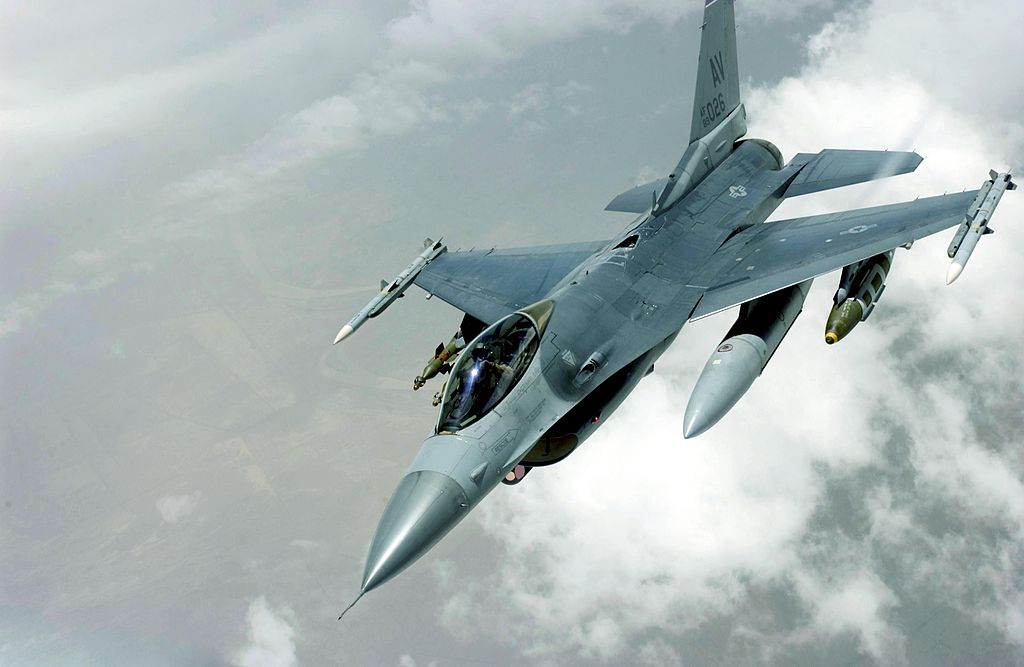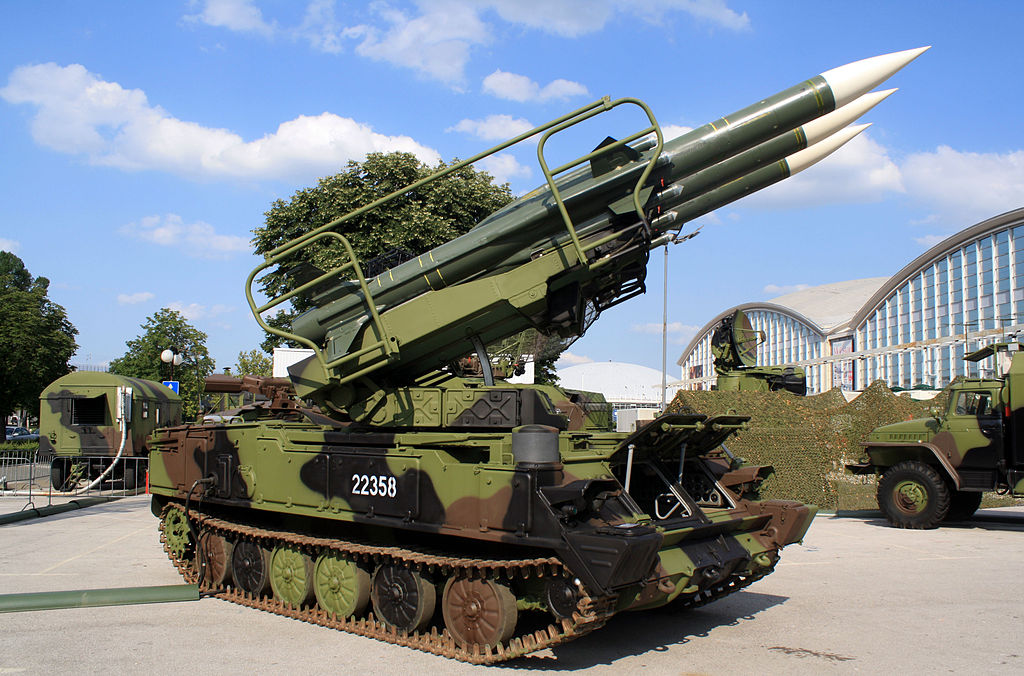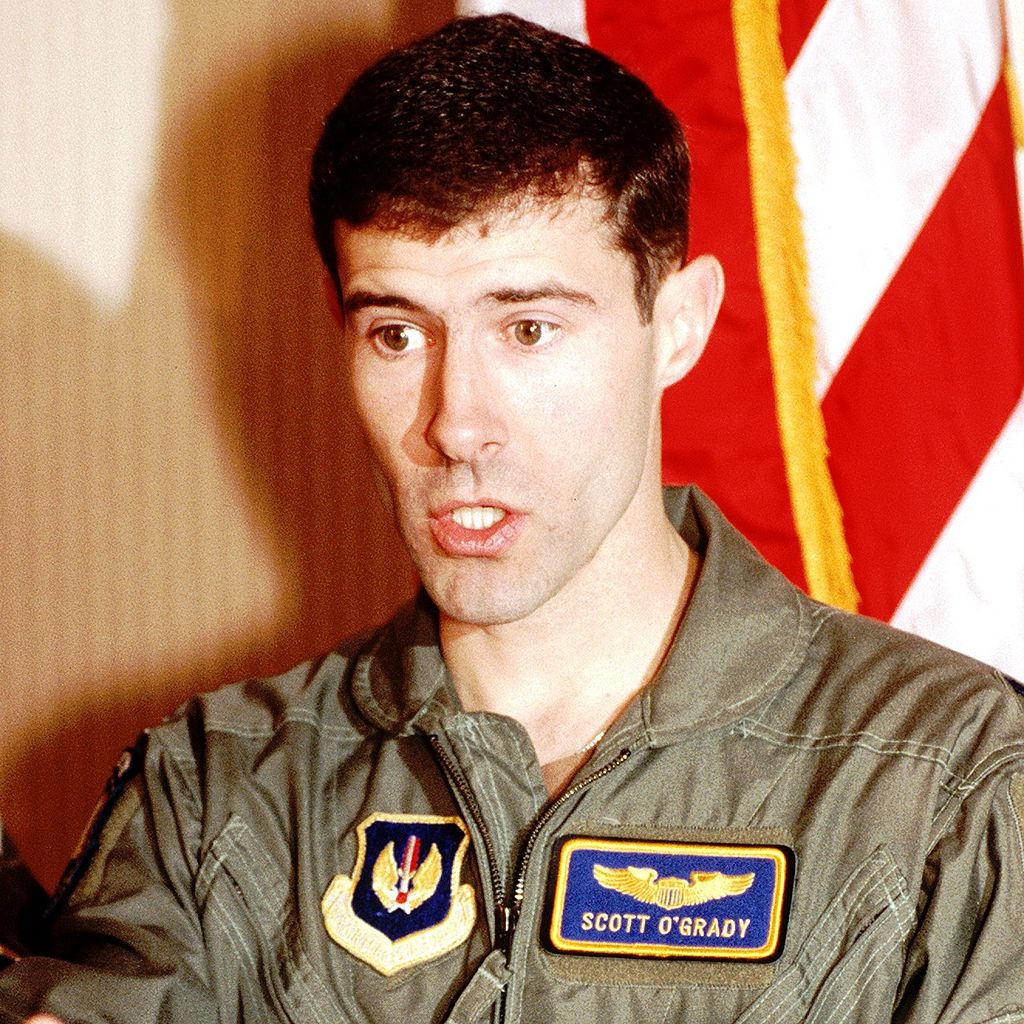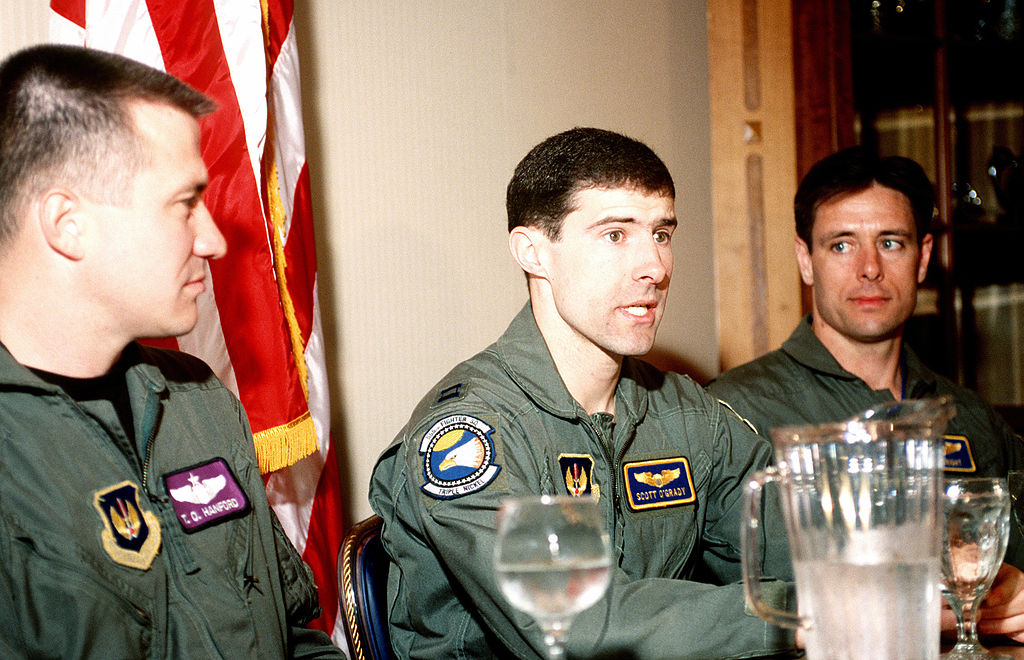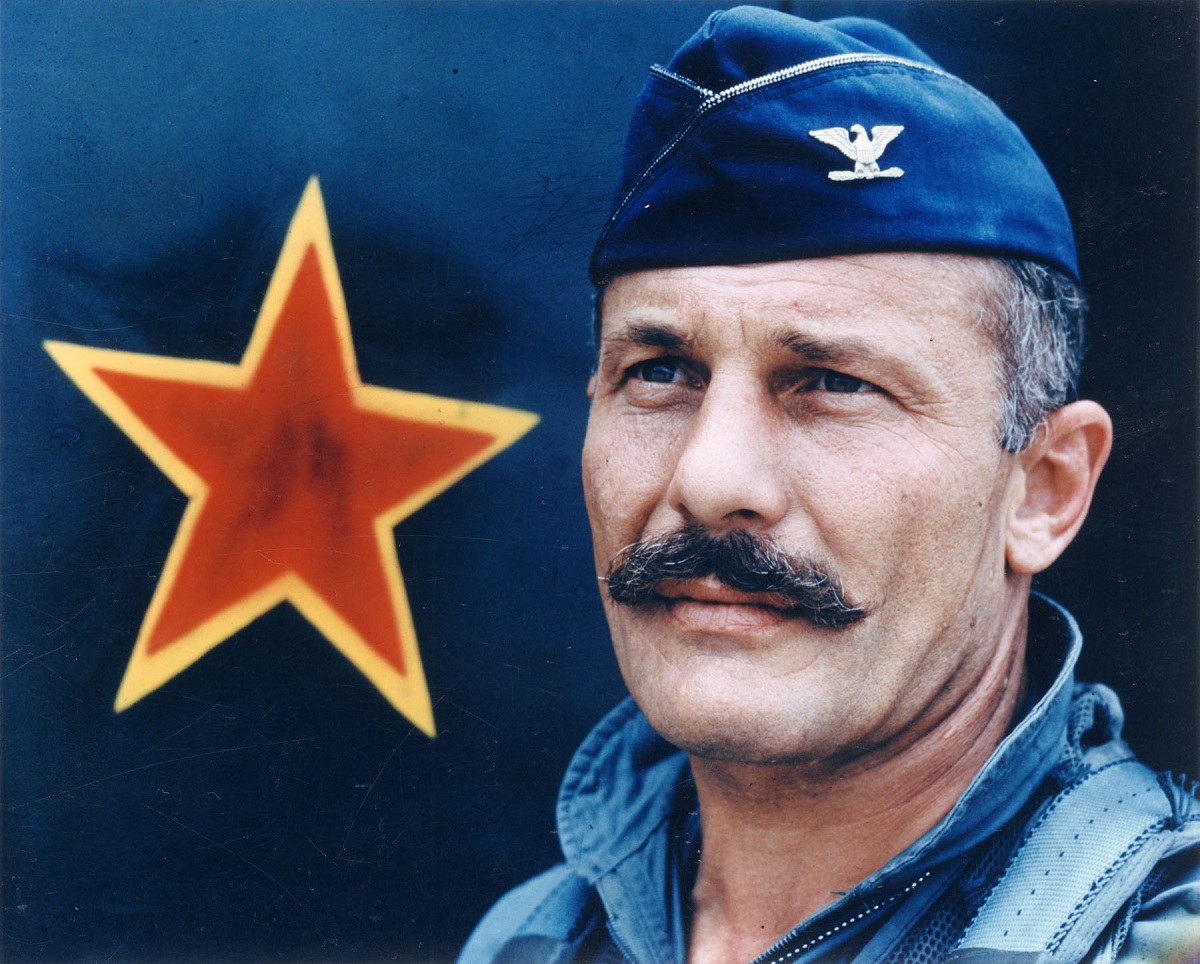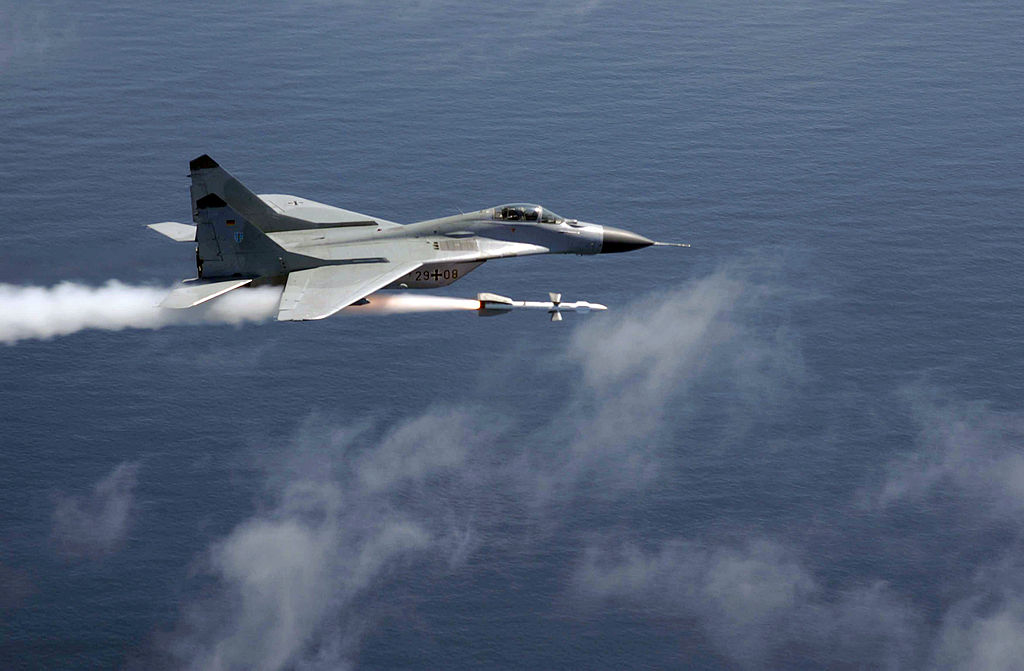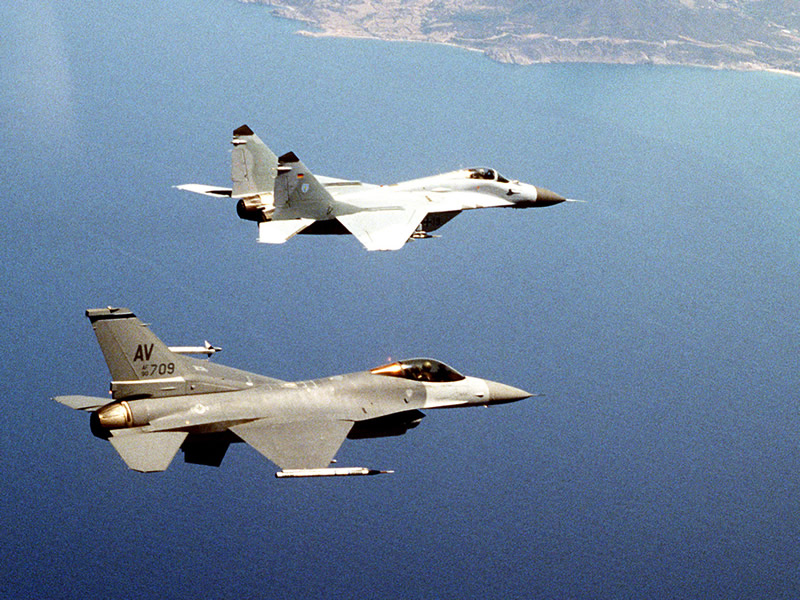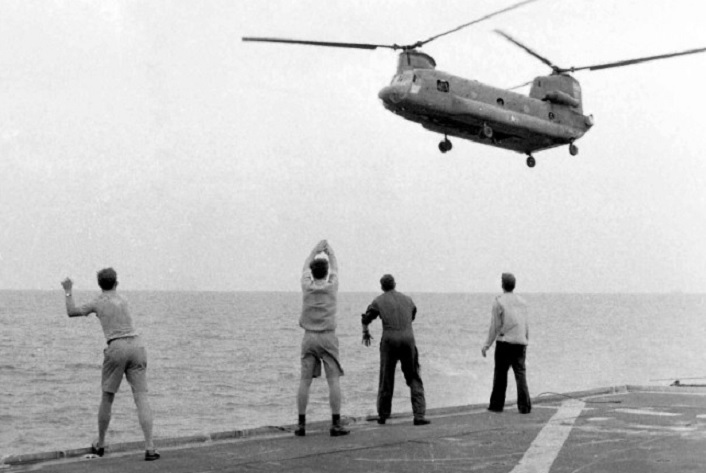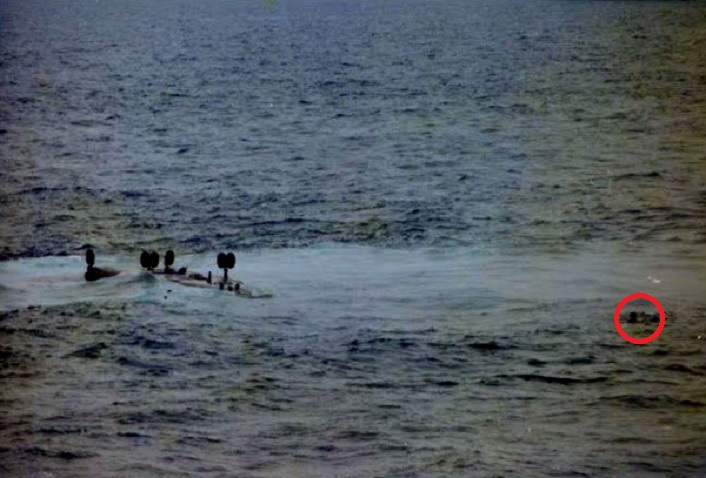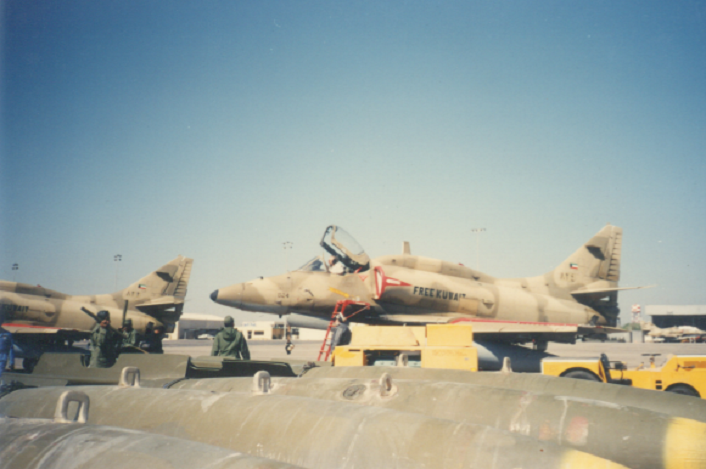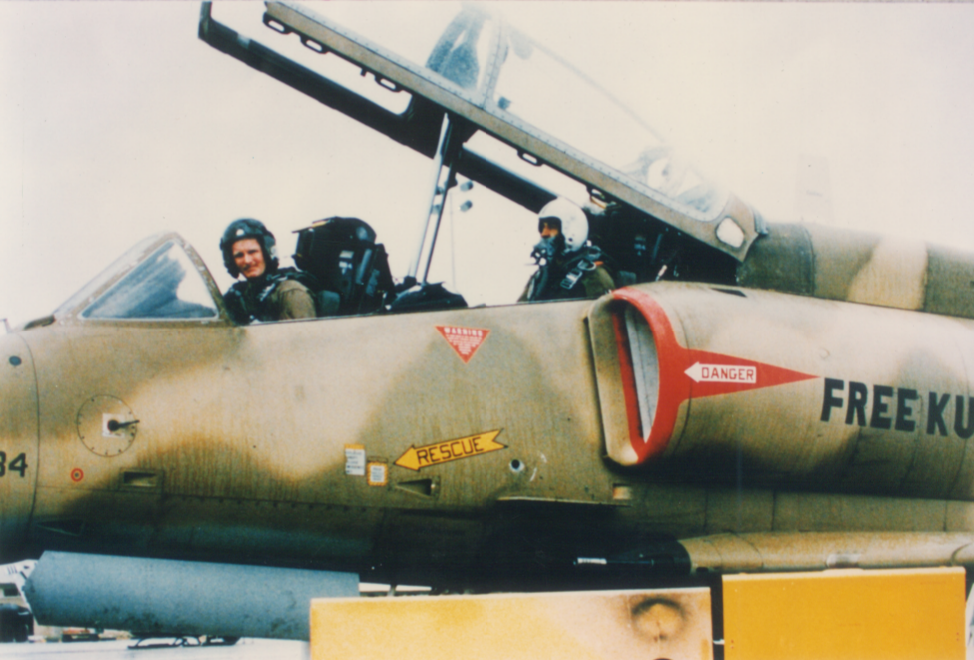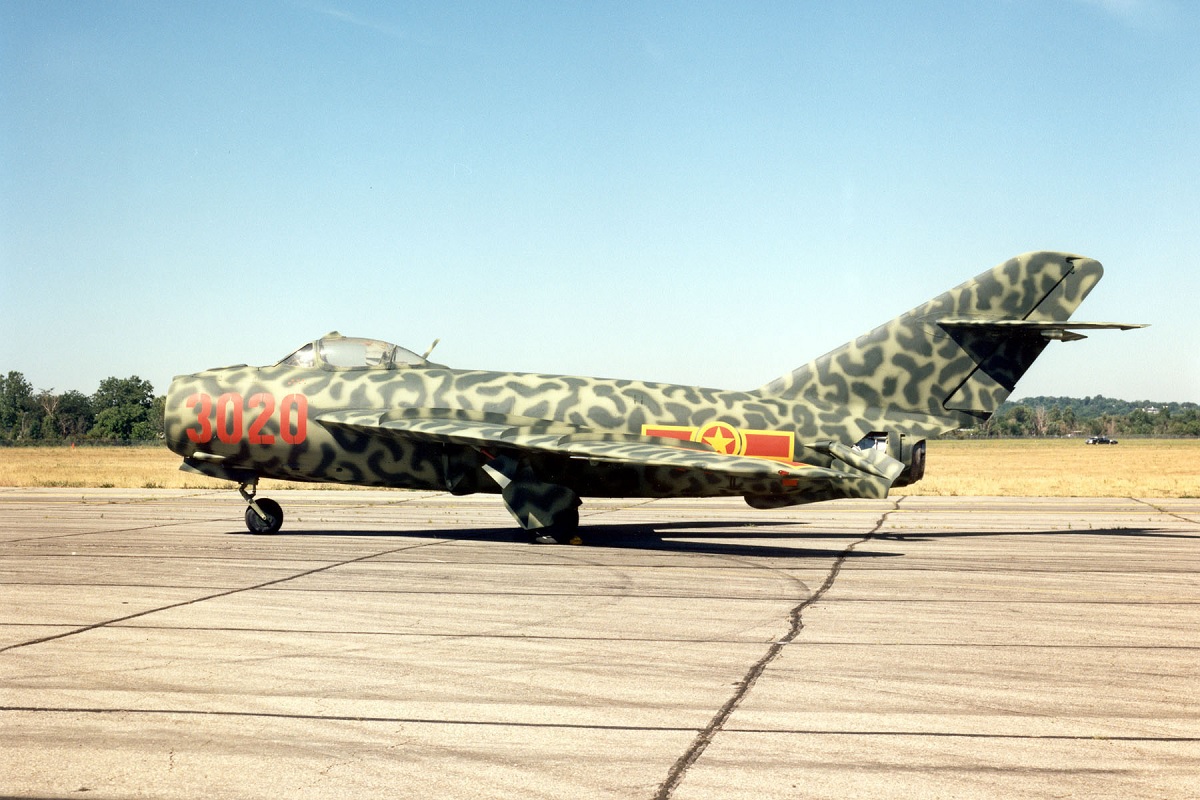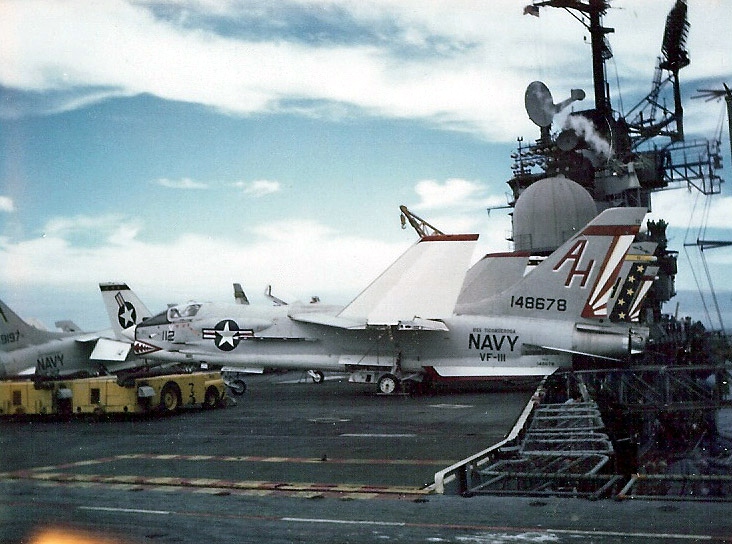‘On December 14, 1967, when I managed to reach 100,110 feet and authenticate it, we wisely decided to call it a day. Interestingly, that record still stands today as a Canadian national altitude record,’ Bud White, RCAF CF-104 pilot who set the Canadian Aircraft Altitude Record
The F-104 Starfighter, a supersonic air superiority fighter, was a technological marvel when it first flew in the 1950s.
It was armed with a six-barrel M-61 20mm Vulcan cannon and performed the roles of a tactical fighter and a day-and-night interceptor when coupled with heat-seeking Sidewinder missiles.
The first XF-104 made its first flight in 1954, after which the F-104’s development started in 1952.
About 300 one- and two-seat Starfighters were bought by the U.S. Air Force (USAF). Additionally, 1,700 F-104s were produced in the US and abroad as part of the military aid program for several countries, including West Germany, Canada, Italy, Norway, the Netherlands, Belgium, Denmark, Greece, Turkey, Spain, Taiwan, and Japan.
Many records were set by the F-104, including the world altitude record of 103,395 feet (set by an F-104C on December 14, 1959) and the world speed record of 1,404.19 mph (set by an F-104A on May 18, 1958). The Starfighter was also the first aircraft to hold the official world records for speed, altitude, and time-to-climb at the same time.
All notable aviation records, especially the World Absolute Speed and Altitude Records of the International Aviation Federation (Federation Aeronautique Internationale, FAI), were fiercely challenged by the United States and the Soviet Union during the Cold War. According to Patrick Martin’s explanation in his book Canadian Starfighter, The CF-104 and CF-104D in Canadian Service from 1961-1986. In 1959, the Russians, the U.S. Navy, and finally USAF Captain Joe Jordan held the world’s absolute altitude record after reaching 103,395.5 feet in a modified F-104C. Col. Georgi Mosolov set a new Russian record in 1961 by reaching 113,892 feet in an E-66A MiG-21 that had been rocket-boosted.
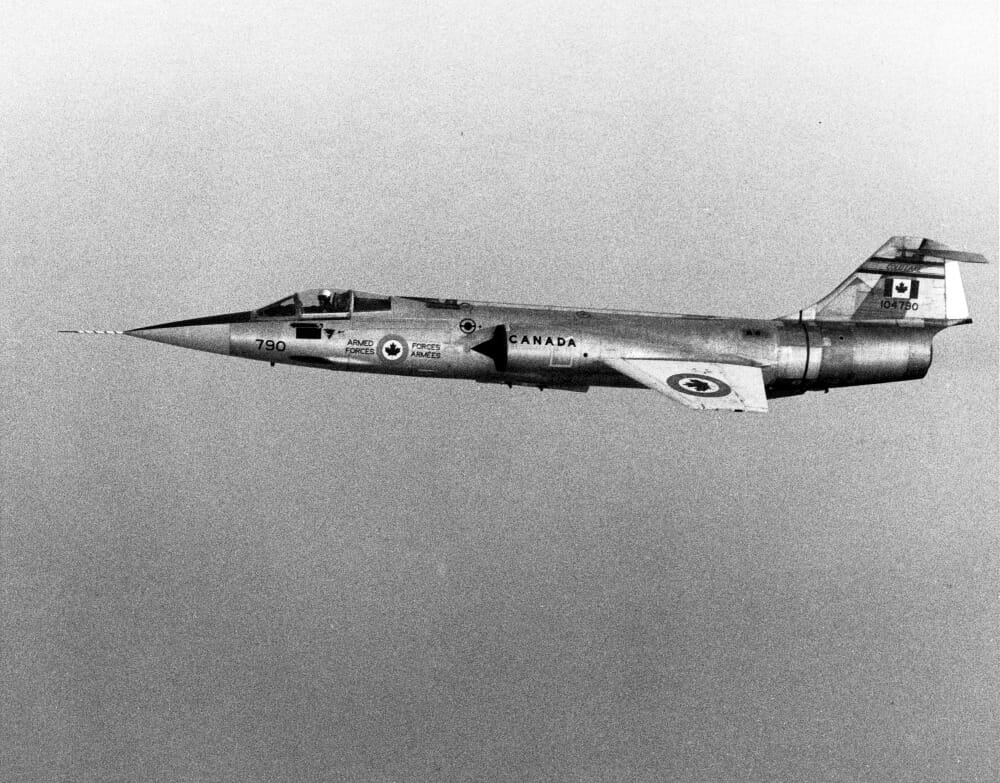
In order to fit Reaction Control System “beepers” for roll, pitch, and yaw “attitude” control for the low dynamic pressures (‘q’) of inner space, the USAF then modified three F-104As to a Zoom Aerospace Trainer NF-104A, configuration with 5,250 lbs thrust, a canted throttleable liquid fuel rocket at the base of the vertical stabilizer, two-foot wing extension panels, and nose exhaust ports.
Robert Smith, the USAF’s top test pilot, had completed 41 Cat 1 test flights and another dozen operational and zoom flights by the time Col. Chuck Yeager took control of the program and helped him reclaim the World Record after reaching an unofficial altitude of 120,600 feet. Yeager’s NF-104 was destroyed on December 10, 1963, when he lost control during a Zoom flight, went into a flat spin, and ejected. Although about 50 more fruitful flights in NF-104As were performed, the program was “shackled,” and the USAF was prohibited from making any other attempts to reclaim the world altitude record.
Wing Commander R.A. (Bud) White, who on December 14, 1967, used a CF-104 aircraft to break the Canadian Aircraft Altitude Record, recalled:
‘On December 14, 1966, at our RCAF’s Aerospace Engineering Test Establishment in Ottawa, my USAF Exchange Test Pilot Jim Reed came to me with an exciting idea: beat the Russians, capture the Absolute World’s Altitude Record, and do it in Canada’s Centennial Year. Jim proposed we use our CF-104 12700 lighten and modify it; take advantage of the Jet stream; and improve the zoom profile. As our studies progressed into 1967, Air Material Command and Orenda readied three upgraded J79 engines for us; Lockheed helped with extended inlet nose cones; the National Research Council (NRC) and National Aeronautical Establishment (NAE) began the development of an extremely sensitive vane to measure the angle of attack (alpha); a detailed jet stream survey was undertaken; and major changes were made in the electronics bay and pressurization system of the 12700. We also had to design/develop lightweight alpha/beta vanes (with the NRC Flight Research Section) to go on our existing plastic nose cone & pitot boom. A major threat was the ‘flat spin mode’, but the Chief of the Defense Staff, General Allard, and the Minister of Defense provided strong support, and the project moved into high gear by midsummer as a highly classified military project.
Physiological training and two Gemini full-pressure suits were obtained through the Institute of Aviation Medicine and the USAF Surgeon General when Ron Hayman and I flew down to Tyndall Air Force Base. Later, we obtained valuable assistance flying the ‘zoom’ simulator at Edwards Air Force Base, and I was able to fly some F-104 ‘Zoom’ flights on their phototheodolite instrumented range.
We finally got airborne in October, quickly worked up the speed to Mach 2.3 while confirming engine performance, and worked out a method to find the core of jet streams. We created absolute silence when we briefed Transport Canada and explained how we planned to fly our ‘zooms’ through the Toronto/Ottawa/Montreal triangle with a ‘block’ airspace through their most densely traveled airspace in Canada. But remarkably, within days, dozens of air traffic controllers were vectoring hundreds of commercial flights around our Zoom flights without any explanation to the commercial carriers.
Authentication was a major problem with the FAI 1% accuracy requirement, and with most of our flights above the cloud until the NRC Defense Research Telecommunications Establishment nearby, Shirley’s Bay came up with a concept to use their 30-foot microwave tracking dish. Eventually, we installed 4GHz ‘beacons’ and a switching arrangement in 12700, tracked them in azimuth and elevation with the 30-ft. dish, tied their measurements to an atomic clock, and obtained distance from a 1GHz beacon and a modified IFF/SIF transponder in the aircraft. Unable to use phototheodolites, this turned out to be the World’s ‘first’ non-visual authentication before the FAI!
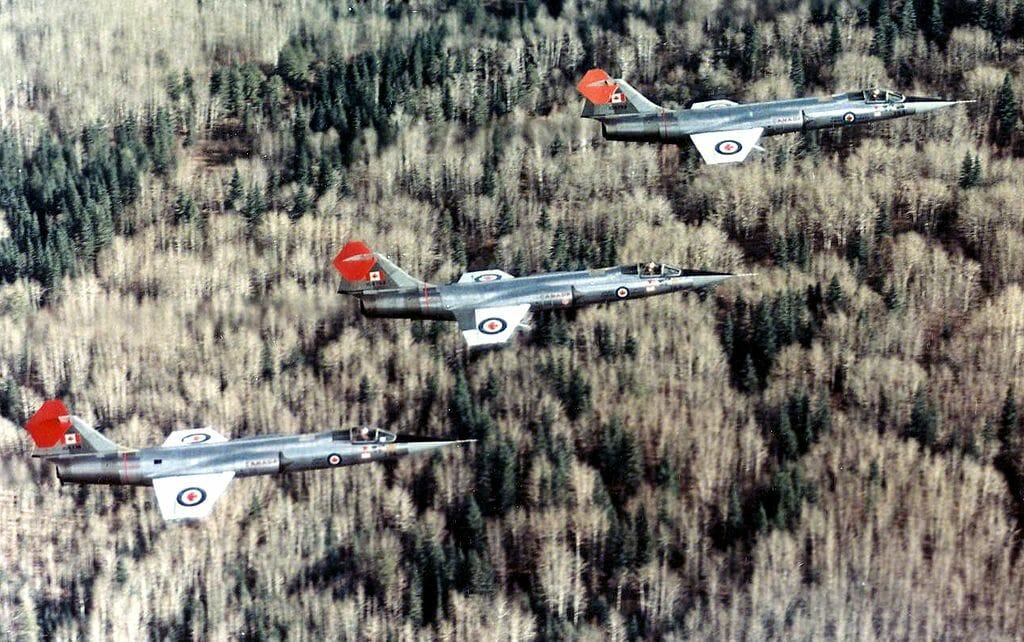
In all, we flew 42 flights in 12700, 25 of them zooms, and twelve of those safely above 95,000 ft. But on these later flights, our hoped-for benefit from the strong jet winds dropped off, and I was running out of control authority going over the top. There, stick nose-down pitching moments at low produced strong left yaw (due to gyroscopic coupling) and needed a full right rudder. On December 14, 1967, when I managed to reach 100,110 feet and authenticate it, we wisely decided to call it a day. Interestingly, that record still stands today as a Canadian national altitude record.’
Photo by aeroprints.com via Wikipedia, San Diego Air & Space Museum Archives, René Francillon Photo Archive via Wikipedia, U.S. Navy



